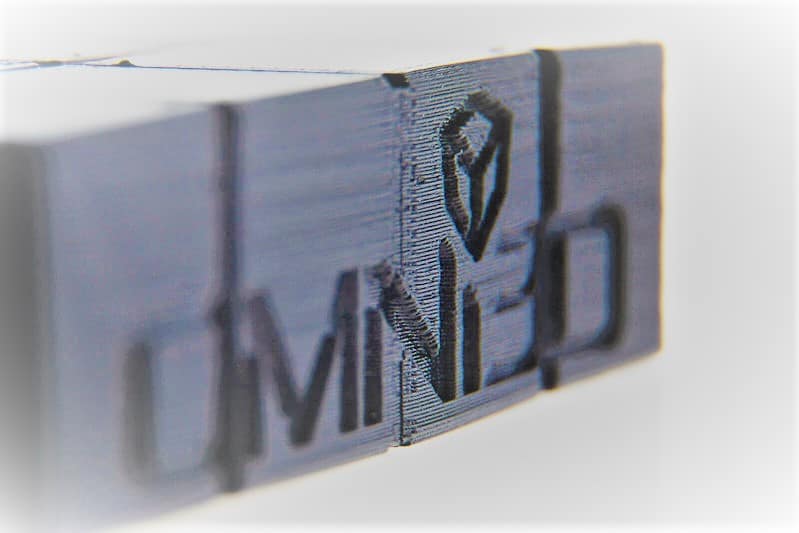Which filament to choose for spare parts production?
If you have already managed to buy an industrial 3D printer - time for the first printout! Its quality depends on the filament you choose and the choice is not easy at all - the amount of materials available on the market can make you dizzy.
What do you have to remember when buying material for an industrial printer? Here are a few questions you need to answer while looking for the perfect filament:
- The filament should be adapted from your 3D printer – after all, different materials require different temperatures for 3D printing. Standard materials like ABS or ASA have a relatively low printing temperature (230-250°C), industrial printers have a closed heated chamber and much wider material possibilities
- The printer must have replaceable heads. However, if you want to print with filaments with additives such as carbon or glass fibre, you must make sure that your 3D printer can heat up the head to high temperatures (above 300°C) and that the head is suitable for printing from a material such as nylon carbon fibre.
Functional prototype or final element printed in 3D?
High-temperature 3D printing materials are more susceptible to shrinkage (e.g. ABS, carbon fibre nylon), in which case it is necessary to heat up the 3D printer table and close the printing chamber, which will effectively improve the quality of printouts.
If your industrial 3D printer meets these parameters, it is worth considering which material will be the most suitable for spare parts printing?
Ask yourself a basic question – is the printout to be used for showing or use?
If you need a functional prototype or practical elements with high mechanical or thermal resistance choose ABS. It can also be used to create final details. If your requirements are greater decide to print with carbon fibre nylon called CF PA 12. Because this material meets the highest requirements you should expect from spare parts.
Filament quality and the influence of moisture on the 3D printing material
However, before you start printing you have to overcome two small problems:
- The first is the quality of the filament in terms of fixed diameter and ovality
We usually say „cheap plastic is bad because it has poor dimensional tolerance or contamination and can block the head”. You can find detailed research on this subject online. Not only the specification of the industrial 3D printer, but also the material from which we print is decisive for the quality of the printouts we receive. And above all, the tolerance for its diameter and ovality.
The process of printing in FFF technology is based on the fact that a plastic strand of material is introduced by an extruder into the printing head (we wrote about it in the article: what is 3D printing in FFF technology?), which under the influence of high temperature (180°C – 420°C depending on the type of printed material) transforms it into a semi-liquid state, allowing it to be distributed on the table and create the desired shape – layer by layer. One of the key factors in this process is to ensure constant and uninterrupted extrusion of the material to the head.
When there is too little of it – holes and gaps will start to appear on the printout, if too much of it – it can cause the head to block. That is why it is so important that the extruded material has a constant diameter and ovality. Large differences in these two parameters will cause, among other things, uneven laying of subsequent layers on the printout. This is why industrial 3D printing materials are more expensive than toy materials.
- The second problem is moisture.
This problem results from the fact that the filaments absorb moisture. Why do filaments absorb moisture? Because they are strongly hygroscopic. Even the most tightly packed filament by the manufacturer is not always suitable for use immediately after taking it out of the packaging. We at Omni3D add an absorbent to each package to stop this process.
The influence of moisture on the filament is undesirable, but it occurs very often, especially among industrial materials. How does it work ? The water settles on the outer layers of the material and penetrates into the interior having a direct impact on the 3D printing process and models.
Even a small amount of moisture in the material can have a negative impact:
- Mechanical parameters of the printout – in the case of printing from industrial materials which have certain properties, we cannot afford to lose their mechanical parameters,
- Quality of the model – the possibility of air bubbles appearing on the walls,
- Layer linking – the ability to combine successive print layers,
- High porosity – the material that absorbed moisture after printing may have a „foaming” structure.
Why is this happening? Water molecules in contact with a heated nozzle evaporate to form bubbles. This is directly reflected in the density of the printout structure (which may be reflected in a lighter color) and dimensional accuracy.
Well dried or maintained in a proper condition, the filament guarantees us a 3D printout every time with the same effect, dimensional accuracy and stability in the area of mechanical requirements and load transfer.
Want to know more about 3D printing materials? Contact us!

Contact:
LinkedIn: Jacek Krzyżanowski
m. +48 886 618 690
e-mail: jk@omni3d.com

